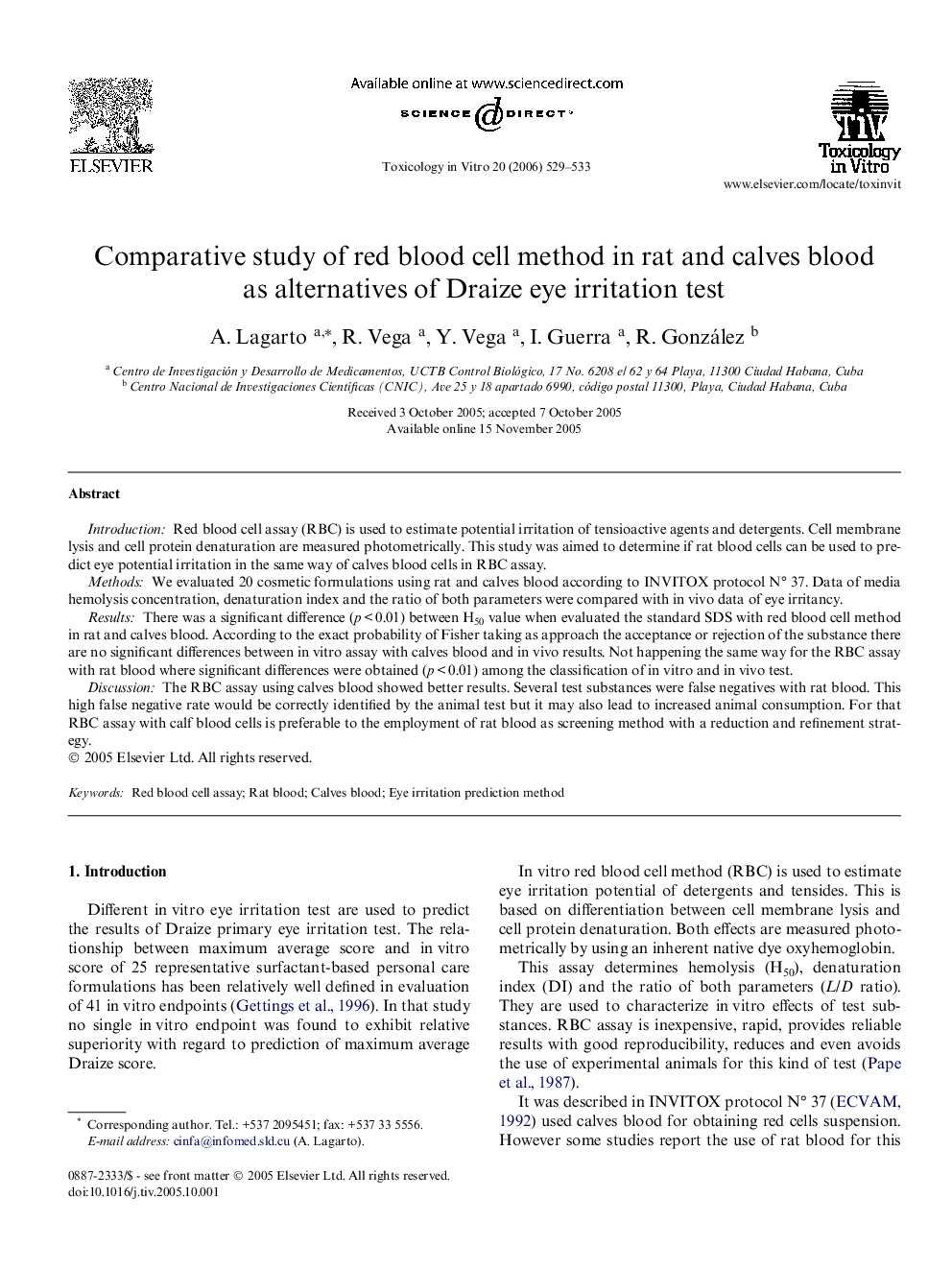| Article ID | Journal | Published Year | Pages | File Type |
|---|---|---|---|---|
| 2604034 | Toxicology in Vitro | 2006 | 5 Pages |
IntroductionRed blood cell assay (RBC) is used to estimate potential irritation of tensioactive agents and detergents. Cell membrane lysis and cell protein denaturation are measured photometrically. This study was aimed to determine if rat blood cells can be used to predict eye potential irritation in the same way of calves blood cells in RBC assay.MethodsWe evaluated 20 cosmetic formulations using rat and calves blood according to INVITOX protocol N° 37. Data of media hemolysis concentration, denaturation index and the ratio of both parameters were compared with in vivo data of eye irritancy.ResultsThere was a significant difference (p < 0.01) between H50 value when evaluated the standard SDS with red blood cell method in rat and calves blood. According to the exact probability of Fisher taking as approach the acceptance or rejection of the substance there are no significant differences between in vitro assay with calves blood and in vivo results. Not happening the same way for the RBC assay with rat blood where significant differences were obtained (p < 0.01) among the classification of in vitro and in vivo test.DiscussionThe RBC assay using calves blood showed better results. Several test substances were false negatives with rat blood. This high false negative rate would be correctly identified by the animal test but it may also lead to increased animal consumption. For that RBC assay with calf blood cells is preferable to the employment of rat blood as screening method with a reduction and refinement strategy.
